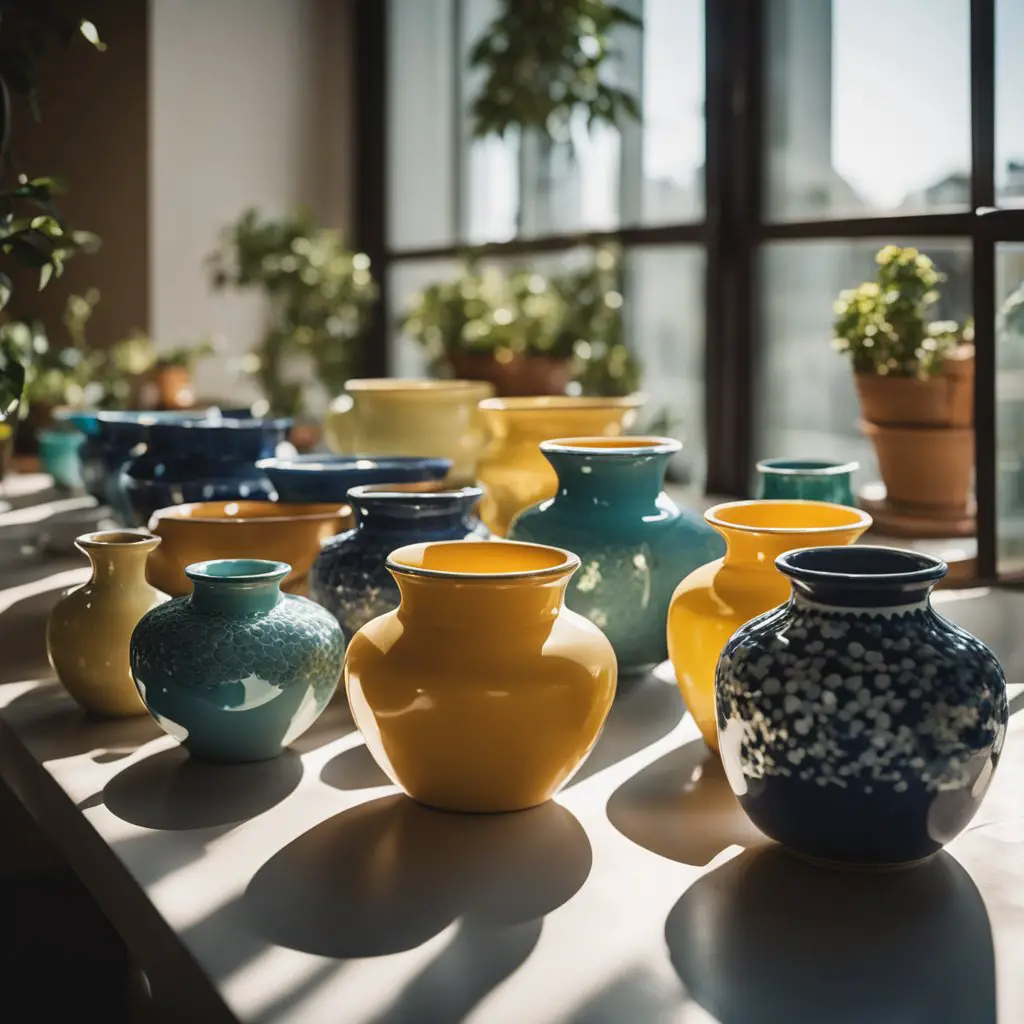One of the transformative processes involved in pottery is that of glazing. You can add color, texture, and character to your piece, all with simple glazes. However, just like with the initial formatting of pottery, the threat of air bubbles does not leave you when you get to the glazing part. This comprehensive article will walk you through the glazing magic when you learn how to achieve a bubble-free finish on your pottery. You will learn special techniques, the right kinds of glazes, and the best preventive measures.
What is the Issue Posed by Bubbling During Glazing?
Bubbles in a glaze can threaten a piece of pottery’s aesthetic appeal and structural integrity, similar to what they do in the fundamental processes. There can be pinholes, craters, and an uneven surface on the pottery if you do not take care of the air bubble beforehand. Not doing so will prominently diminish the quality of your piece. Understanding the root causes behind this anomaly is essential for creating smooth-looking work.
How Do You Make Sure Your Glaze Does Not Leave Bubbles?
You can employ specific ways to ensure the glazing process does not leave unnecessary bubbles on the pottery. These involve choosing the right glaze, employing the right techniques, and proper application. Let us learn these processes in greater detail:
1. Choosing the Right Glaze
Using the right glaze for your pottery to become durable, textured, and even shinier is essential. Let us understand how you can make the correct decision in this context:
- Understand the Right Ingredients
The key to a bubble-free glaze starts with understanding the ingredients. Fluxes, silica, and alumina all affect the glaze’s behavior. Educate yourself on the properties of each ingredient and their impact on the firing process.
You can only get to the right glaze when you understand the ingredients well. In this regard, try out the Mayco Stroke and Coat Glaze Set to get started. It has just the required ingredients without any toxins. Thus, it won’t produce any bubbles on the pottery post-firing.
- Test Glazes for Compatibility
The pottery and its glaze must be compatible with each other. What works for one piece may not work for another, which is a leading cause of air bubbles and crazing later on. Get some samples of glazes and try it out on your work to see if it works well for you.
2. Employing the Right Glaze Preparation Techniques
Now that you have the perfect glaze, you need the right way to prepare it for the pottery. Here are some preparation techniques to try when you are about to begin with application so you can seamlessly apply those smooth coats.
- Sieving and Filtering
You need to sieve your glaze, even if it is commercially available, to eliminate any hard impurities. It would be best if you have a smooth consistency to work with. Filtering removes any unwanted particles that can later create bubbles on the piece.
- Adjusting Glaze Consistency
You also need to watch out for the glaze consistency you are using. Whether you are using the brushing or dipping technique, try experimenting with water or deflocculants to get the desired viscosity for your specific application method.
3. Proper Application
Lastly, there is the process of application of the glaze. You can dip the piece in the glaze or brush the glaze upon the pottery. Here is how each of these work:
- Brushing
Brushing the glaze on the piece requires a steady hand and the right brush. Choose a brush based on the size and intricacy of your pottery. If you do it right, you can avoid excessive thickness and prevent bubbling during firing.
- Dipping
Dipping is a fitting way to glaze larger pottery pieces that cannot be comfortably brushed with glaze. Ensure the glaze is mixed thoroughly and the pot is dipped evenly.
Conclusion
Glazing is undoubtedly an enriching and magical experience for pottery who can do it right. But for those who are fed up with air bubbles, it can be a daunting task. The ways mentioned above and techniques are perfect for helping you with a seamless glazing process that will result in no bubbles during firing.







